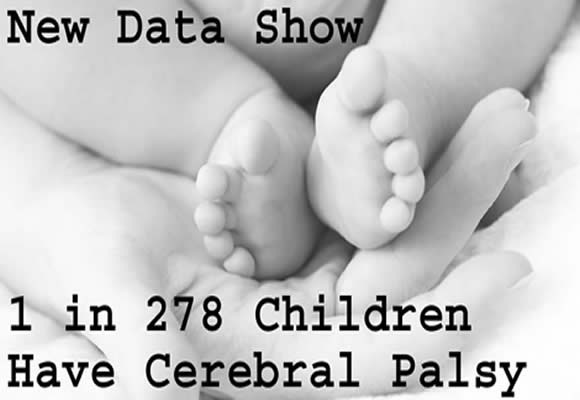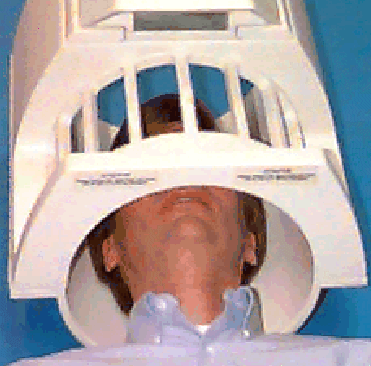| Behavior | 1 in 4 children with cerebral palsy have a behavior disorder (moderate-quality GRADE) | Children with cerebral palsy and an ID are more likely to have behavioral problems (high-quality GRADE) | Unknown | Thorough assessment of behavior is recommended. Also a pain assessment is essential in the presence of behavioral problems, even for children with mild physical impairments. |
| The rate of abnormal behavior in children with cerebral palsy is 2 to 4 times higher than the population (moderate-quality GRADE) | Children with cerebral palsy and epilepsy are more likely to have behavioral problems; these children are also more likely to have an intellectual impairment (moderate-quality GRADE) | Pain control may remediate or minimize the behavioral problem. |
| Children with cerebral palsy and severe pain are more likely to have behavioral problems (high-quality GRADE) | Standard psychometric IQ assessment is also recommended in the presence of behavioral problems to enable the family to understand the prognosis of the behavioral problem. |
| Children with cerebral palsy and milder physical disability are more likely to have behavioral problems than children with severe physical disability (high-quality GRADE) |
| Bladder and bowel control | 1 in 4 children with cerebral palsy do not have bladder control (moderate-quality GRADE) | The risk of bladder and bowel control problems increases with severity of physical disability (moderate-quality GRADE) | Unknown | Medical investigations are warranted as abnormal anatomic findings are common |
| The rate of bladder control problems in children with cerebral palsy <4 2="2" 3="3" grade="grade" higher="higher" is="is" low-quality="low-quality" old="old" population="population" td="td" than="than" the="the" times="times" to="to" years="years"> | Children with cerebral palsy who are unable to walk or have an ID are most at risk for bladder and bowel control problems (moderate-quality GRADE) | Children with cerebral palsy should be offered standard toilet training but over a longer period of time |
| 1 in 3 to 4 children with cerebral palsy have constipation (low-quality GRADE) | Prescription of incontinence aides will be required for 1 in 3-4 and this will be for longer periods of time that children without physical disabilities |
| Dribbling | 1 in 5 children with cerebral palsy dribble (moderate-quality GRADE) | Children with severe physical disability are more likely to dribble (moderate-quality GRADE) | Unknown | Social stigma is a major problem arising from dribbling and effective treatments such as Botulinum toxin A or surgical interventions should be explored. |
| Eating | 1 in 15 children with cerebral palsy are tube-fed (moderate-quality GRADE) | Children with a history of poor sucking during infancy are more likely to have feeding problems (moderate-quality GRADE) | Eating skills remain stable in adulthood (high-quality GRADE) | Infants with cerebral palsy and poor sucking should have their eating comprehensively monitored. |
| Children with cerebral palsy are 3 times more likely to have feeding problems at 6 months of age (moderate-quality GRADE) | Children with severe physical disability are more likely to need someone to feed them (moderate-quality GRADE) and are more likely to need tube feeding (moderate-quality GRADE). | Swallowing safety should be comprehensively assessed if concerns are reported. |
| Children who are nonverbal are more likely to have difficulty feeding (high-quality GRADE) | Weight should also be measured regularly as those with more severe physical disability have higher risk for malnutrition. |
| Epilepsy | 1 in 4 children with cerebral palsy have active epilepsy (high-quality GRADE) | The risk of epilepsy with cerebral palsy increases with severity of physical disability (high-quality GRADE) | Adults with cerebral palsy and epilepsy are less likely to work (high-quality GRADE) | Anti-epileptic medications are usually effective for managing seizures and are considered standard practice for managing epilepsy in children with cerebral palsy |
| 1 in 3 children with cerebral palsy have had epilepsy at some time (high-quality GRADE) | Children with both sides of the body affected are more likely to have epilepsy (high-quality GRADE) | Children with cerebral palsy are less likely to become seizure-free (low-quality GRADE) |
| Children with cerebral palsy and an ID are more likely to have epilepsy (high-quality GRADE) |
| Hearing | 1 in 25 children with cerebral palsy have severe hearing impairment or are deaf (high-quality GRADE) | Children with more severe physical disability are more likely to have a hearing impairment (moderate-quality GRADE) | Unknown | Early screening, assessment, and accommodation for hearing impairment is recommended |
| Hips and spine | 1 in 3 children with cerebral palsy have hip displacement (high-quality GRADE) | Children with both sides of the body affected and who cannot walk are at the greatest risk of hip problems (high-quality GRADE) and scoliosis (low-quality GRADE) | Long-term active hip surveillance reduces the likelihood of progression from hip displacement to hip dislocation (moderate-quality GRADE) | 6- to 12-month hip surveillance is recommended and is effective for ensuring access to early treatment. Radiograph and clinical assessment should commence very early. For those who receive hip surveillance the rate of salvage orthopedic surgery is lower |
| 1 in 10 children with cerebral palsy have hip dislocation without hip surveillance (high- quality GRADE) | The risk of hip abnormalities with cerebral palsy increases with severity of physical disability (high-quality GRADE) |
| The risk of associated spinal deformity increases with severity of physical disability (low-quality GRADE) |
| Intellect | 1 in 2 children with cerebral palsy have an ID (moderate-quality GRADE) | Children with more severe physical disability are more likely to have an intellectual impairment (moderate-quality GRADE) | Unknown | Formal assessment and diagnosis of an ID is an important prognostic indicator for walking, bladder control, school performance, and likelihood of independent living |
| 1 in 4 children with cerebral palsy have a severe ID (moderate-quality GRADE) | Children with dyskinetic cerebral palsy who have an ID are more likely to have a severe ID than those with spastic cerebral palsy (moderate-quality GRADE) | If multiple impairments exist, psychometric screening of intelligence is highly recommended for intervention and school planning |
| Pain | 3 in 4 children with cerebral palsy are in pain (moderate-quality GRADE) | Children and adults with cerebral palsy regardless of level of disability are at risk for pain (high-quality GRADE) | Pain is linked to higher rates of behavioral problems and lower participation (high-quality GRADE) | Parents and children report levels of pain differently and therefore the child’s perceptions should always be sought |
| For those who can walk, neck, back, and feet are high-risk pain sites (low-quality GRADE) | Pain increases with age (moderate-quality GRADE) | Investigate a wide range of pain origins (eg, dental, gastrointestinal, muscular, neuropathic, rheumatology, skeletal, tonal) |
| Children and adults with contracture are at higher risk of developing pain (moderate-quality GRADE) | Comprehensive pain management should be instigated to minimize the likelihood of secondary behavioral problems from developing |
| Sleeping | 1 in 5 children with cerebral palsy have a sleep disorder (low-quality GRADE) | Children with cerebral palsy and active epilepsy are most at risk for sleep disorders (low-quality GRADE) | Unknown | Through and specialist assessment of sleep problems are recommended |
| The rate of sleep disorders in children with cerebral palsy is 5 times higher than the population (low-quality GRADE) | Children with spastic quadriplegia or dyskinesia or a severe visual impairment are more likely to have difficulty initiating and maintaining sleep (low-quality GRADE) | Early treatment of sleep problems (both medical and behavioral) is advisable before secondary academic and behavioral problems emerge or are established |
| Talking | 1 in 4 children with cerebral palsy cannot talk (high-quality GRADE) | Children with more severe physical disability/nonambulatory are more likely to have a speech impairment (high-quality GRADE) | Unknown | Early assessment and recommendations of augmentative and alternative communication options for speech impairment is recommended |
| 1 in 3 children with cerebral palsy have some speech impairment (high-quality GRADE) | Children with dyskinesia are more likely to have speech problems (high-quality GRADE) |
| Walking | 1 in 3 children with cerebral palsy cannot walk (high-quality GRADE) | Children with cerebral palsy who have 4 limbs affected and/or ID and/or epilepsy and/or a vision impairment have a higher risk of being unable to walk (high-quality GRADE) | Children who walk using aids or cannot walk lose walking function during adolescence (moderate-quality GRADE) | Children who walk using aides and their families should be emotionally prepared for potential loss of motor function in adolescence |
| 1 in 6 children with cerebral palsy walk using aides (high-quality GRADE) | At age 2 years, children with cerebral palsy who are unable to roll, sit, or pull to stand have a very high risk of being unable to walk (high-quality GRADE) | Ability to walk further declines during later adulthood. (high-quality GRADE) | Children who walk using aides require mobility assessments at the commencement of adolescence to enable prescription of appropriate mobility devices to accommodate declining motor function |
| 1 in 2 children with cerebral palsy walk independently (high-quality GRADE) | A child’s walking ability at age 12 years is predictive of their walking ability as an adult. (high-quality GRADE) |
| Vision | 1 in 10 children with cerebral palsy have a severe visual impairment or are blind (moderate-quality GRADE) | Children with severe physical disability are more likely to have a visual impairment (high-quality GRADE). Among those with severe physical disability, severe visual impairment occurs more frequently with spasticity than dyskinesia (high-quality GRADE) | Unknown | Early screening, assessment, and treatment of vision impairment is recommended |
| 1 in 4 children with cerebral palsy have a vision impairment (moderate-quality GRADE) | Children born prematurely with cerebral palsy are more likely than children without cerebral palsy to have visual impairments (high-quality GRADE) |
 Let's ring in the new year by dispelling some "neuro flapdoodle"! - A study shows that removing heavy metals from the blood through a process called chelation does not help children who have autism. JR
Let's ring in the new year by dispelling some "neuro flapdoodle"! - A study shows that removing heavy metals from the blood through a process called chelation does not help children who have autism. JR

